.
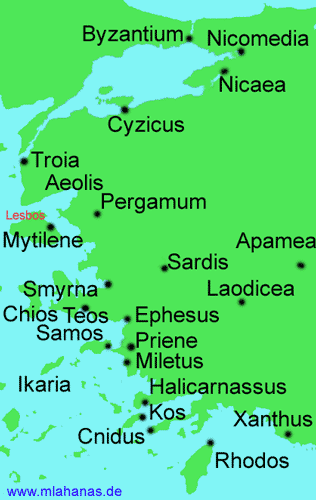
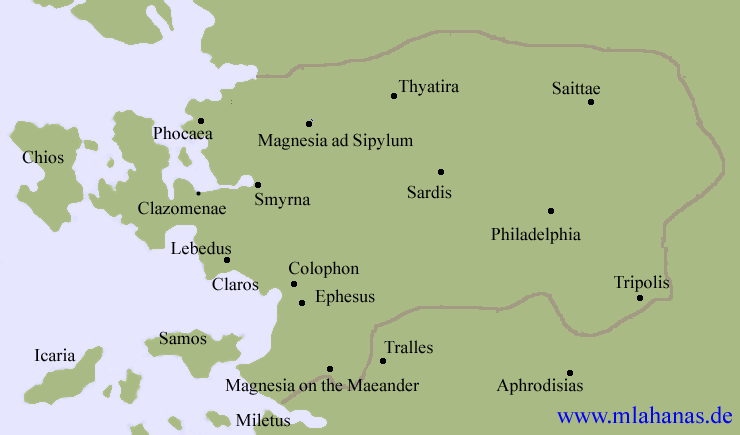
Ephesus was one one of the great cities of the Ionian Greeks in Asia Minor, located in Lydia where the Cayster river flows into the Aegean Sea (in modern day Turkey). It was founded by colonists principally from Athens. The ruins of Ephesus are a major tourist attraction, especially to people that travel Turkey by cruise, via the port of Kusadasi.
Ancient Ephesus
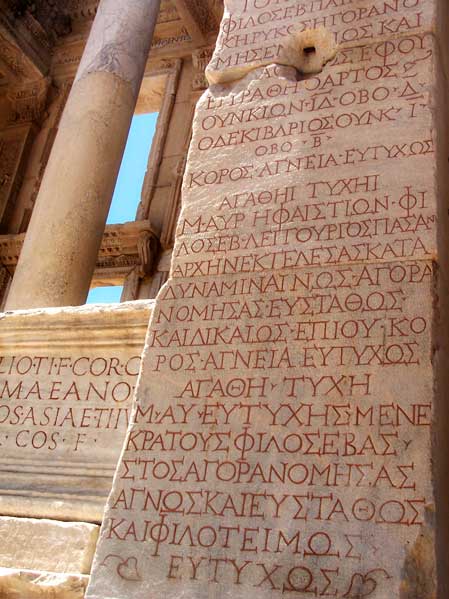
Greek Inscriptions (on the left a Roman text) from Ephesus (Source)
Ephesus is believed by many to be the Apasa (or Abasa) mentioned in Hittite sources as the capital of the kingdom of Arzawa. Mycenaean pottery has been found in excavations at the site. The many-breasted "Lady of Ephesus", identified by Greeks with Artemis, was venerated in the Temple of Artemis, the largest building of the ancient world, according to Pausanias (4.31.8) and one of the Seven Wonders of the World, of which scarcely a trace remains
Roman Ephesus
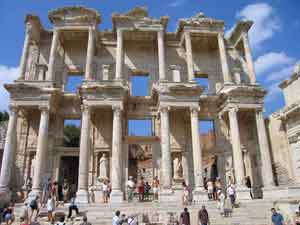
Celsus-Library [Source]
Beginning in the Roman Republic, Ephesus was the capital of proconsular Asia, which covered the western part of Asia Minor. The city bore the title of "the first and greatest metropolis of Asia." It was distinguished for the Temple of Artemis (Diana), who had her chief shrine there, for its library, and for its theatre, which was the largest in the world, capable of holding 50,000 spectators. It was, like all ancient theatres, open to the sky. Here were exhibited the fights of wild beasts and of men with beasts. The population of Ephesus has been estimated to be in the range of 400,000 to 500,000 inhabitants in the year 100 AD. Also built in Ephesus around this time were the Roman Baths, of interest is what is believed to be the first instance of indoor plumbed toilets.
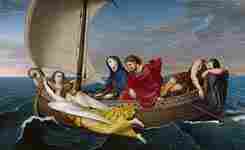
The Virgin and Saint John Travel to Ephesus, German Hernandez Amores
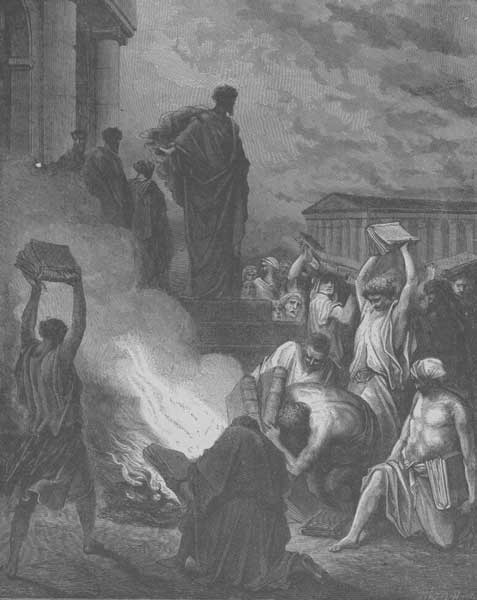
Paul at Ephesus, burning of the books
Ephesus was an important center for early Christianity. Paul used it as a base: he became embroiled in a dispute with artisans whose livelihood depended on the Temple of Artemis there (Acts 19:23-41), and wrote 1 Corinthians from Ephesus; later wrote to the Christian community at Ephesus. It was one of the seven cities addressed in Revelation (2:1-7). There is also a letter written by Ignatius of Antioch to the Ephesians in the early 2nd century AD.
According to one legend, the Virgin Mary settled in Ephesus after the crucifixion. A house about 7 km from Selcuk, lying just outside Ephesus, is said to have been the last home of the Virgin Mary and is a place of pilgrimage; this structure dates to the 7th century and presumably is built on the site of the house where she lived.
Ephesus was the setting for the Third Ecumenical Council in 431, which resulted in the condemnation of Nestorius.
The Celsus library, whose facade still stands, was built by a Roman in memory of his father. It is spectacular. The building faces east so that the reading rooms could make best use of the morning light.
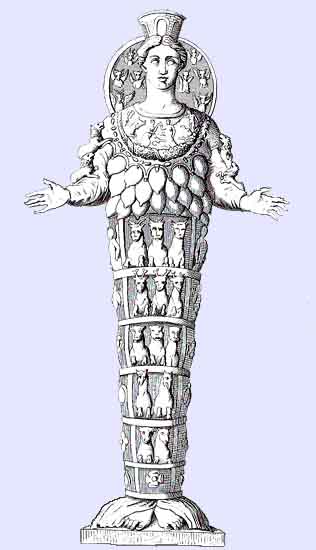
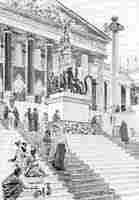
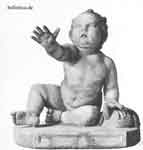
Xenophon of Ephesus , Ephesian Tale
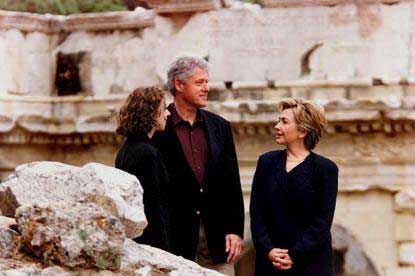
Former US President Bill Clinton with his wife and daughter Chelsea in Ephesus (Source)
| Ancient Greece
Science, Technology , Medicine , Warfare, , Biographies , Life , Cities/Places/Maps , Arts , Literature , Philosophy ,Olympics, Mythology , History , Images Medieval Greece / Byzantine Empire Science, Technology, Arts, , Warfare , Literature, Biographies, Icons, History Modern Greece Cities, Islands, Regions, Fauna/Flora ,Biographies , History , Warfare, Science/Technology, Literature, Music , Arts , Film/Actors , Sport , Fashion --- |
Retrieved from "http://en.wikipedia.org/"
All text is available under the terms of the GNU Free Documentation License


